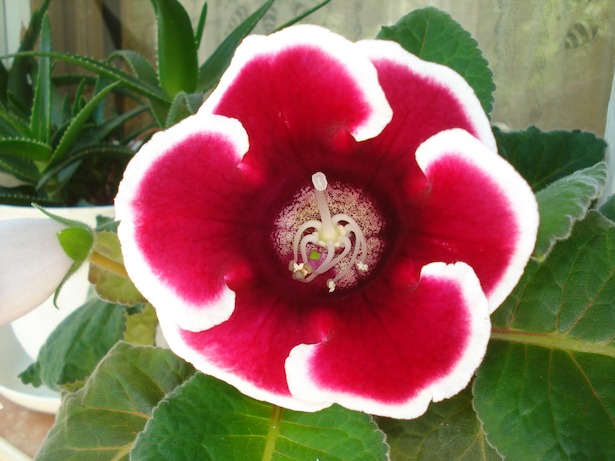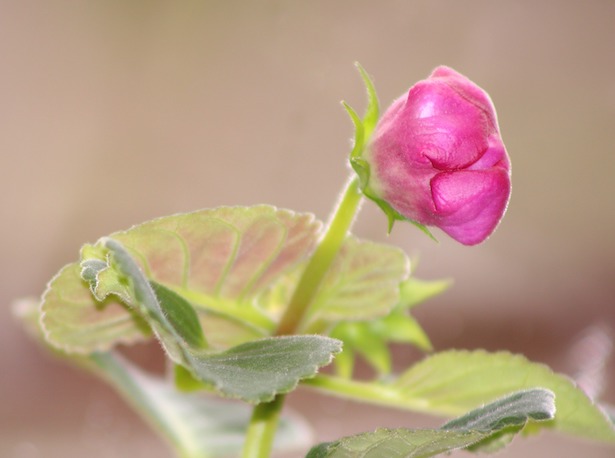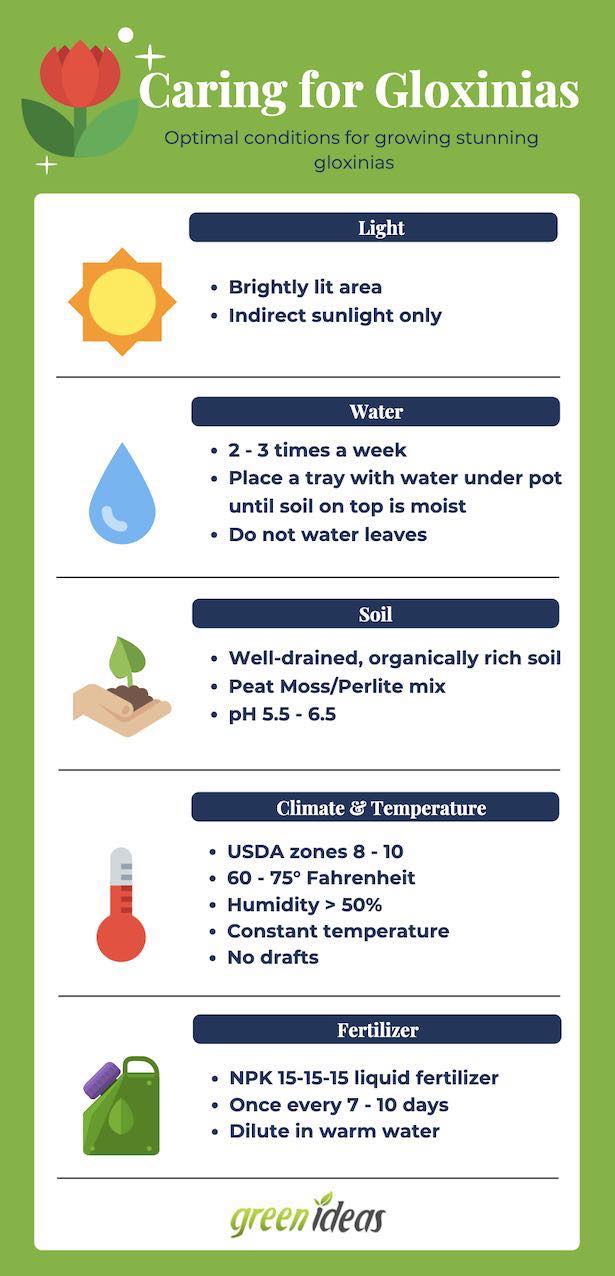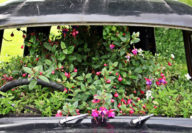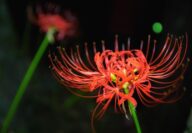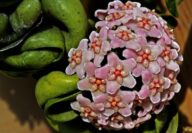Growing and Caring for Gloxinia – Sinningia Speciosa
Gloxinia or Sinningia Speciosa is a tropical flowering plant originating from Brazil that is known for its striking trumpet-shaped flowers which come in different shades of red, blue, purple and pink, and sometimes have fringes or spots of white.
Because of its spectacular large and velvety bell-shaped flowers, the gloxinia is an extremely popular houseplant. In addition to its stunning flowers, gloxinias also have beautiful large dark green leaves that are oblong, toothed and fuzzy. Its flowers grow to around 2 inches in length on a background of leaves that can grow to 6 inches in length. Gloxinias also tend to remain small and compact with a height of 6 to 10 inches and an equal spread.
Gloxinia or Sinningia Speciosa?
In the horticultural trade, what we know as gloxinia, florist’s gloxinia or Brazilian gloxinia, is technically known as the Sinningia Speciosa plant. Sinningia Speciosa was originally classified as part of the Gloxinia genus. However, it was later reclassified as part of the Sinningia genus. Nonetheless, both the Gloxinia genus and the Sinningia genus are related, as they are part of the Gesneriaceae family. Notwithstanding this change in classification, the Sinningia Speciosa plant is still referred to as gloxinia. So, when buying gloxinia seeds or tubers, make sure that they also bear the species name of Sinningia Speciosa.
Nowadays, most kinds of gloxinias that are for sale are hybrid plants that have been selectively bred, often to yield larger flowers and more blossoms than the Sinningia Speciosa plants that are native to Brazil.
Is Sinningia speciosa annual or perennial?
Gloxinias were technically considered as perennial plants and would therefore reflower in the following years. However, due to the selective breeding of gloxinia hybrids in order to yield larger flowers and multiple blooms, modern day Sinningia speciosa plants are often grown as annuals or only last a couple of years. The unintended consequence of this hybridization is that the plant will focus most of its nutrients and energy towards blooming, rather than towards developing its root system. Due to this, if your gloxinia hybrid reblooms the following year, it is likely to have smaller flowers or fewer blooms.
Growing Conditions
While generally grown as houseplants in the United States, gloxinias can also be grown outdoors, provided the climate is warm enough and the plant is protected from direct sunlight.
Below you will find all the conditions for proper growth and care of gloxinias, followed by a guide to planting and growing them from tubers and seeds.
Watering Gloxinias
Gloxinias need different amounts of water depending on its stage of growth.
Generally speaking, gloxinias don’t need much water; they need just enough water to keep their soil moist. Water the plant directly on its soil, without watering its leaves. When its leaves are watered, they will develop unattractive brown spots.
Alternatively, if your gloxinia is potted, set its container in a tray or pan with water inside and its soil will absorb the water from the bottom. Once the soil on top is moist, remove the remaining water from the tray to avoid root rot.
During its flowering period, regularly water your gloxinia 2 or 3 times a week. Check that its soil does not dry out and remains moist. If the soil is drying out, water the plant because if it dries out it will enter dormancy.
Note that while the gloxinia’s soil must be kept moist, it must not be excessively damp because this will cause the tuber to rot.
When the flowers start dying, reduce watering until the flower dies. Once the flowers are dead, stop watering and let the leaves die as well and remove them.
Do not water the gloxinia tuber for 2 to 4 months, letting it rest in dry soil. When new growth appears start watering it again, keeping the soil moist.
How Much Light do Gloxinias Need?
Gloxinias must be placed in a consistently bright area, but not in direct sunlight. Excessive direct sunlight will kill your plant.
If you are growing your gloxinia as a houseplant, place it in an area that is close to a window, where it will receive bright light, but make sure it is out of direct sunlight.
If you are growing your gloxinia outdoors, plant it in a shady area that will receive indirect sunlight.
Ideal Temperature and Climate for Gloxinias
Gloxinias grow best in a stable temperature that stays between 60 and 75 degrees Fahrenheit. For this reason, they are especially suited to be grown indoors.
Sinningia Speciosa is not a cold hardy plant; it is hardy in USDA zones 8 to 10. If you live in cold areas, you should only grow it as a houseplant, more so if your area is prone to freezing, as this will kill your gloxinia. This plant also prefers a constant climate, so even when it is grown as a houseplant, keep it away from drafts. This means that it should be kept away off windowsills to avoid drafts and avoid part of the plant touching the glass and freezing.
The plant prefers a subtropical and tropical coast climate with high humidity.
Ideally, gloxinias should be kept at a humidity level above 50%. Humidity must be kept especially high, after initially planting or propagating your gloxinia.
To maintain high humidity, you can spray the plant with water from a distance or place the pot on a tray with wet pebbles so the evaporating water will keep the plant moistened.
Optimal Soil Conditions for Gloxinias
Gloxinias thrive in organically rich, well-drained soil that is slightly acidic, with a pH of about 5.5 to 6.5.
Since Sinningia Speciosa is a relative of the African violet, an African violet soil mix is the best kind of soil to use, both for potted and outdoor plants.
If you want to amend your own soil, a mixture of peat moss and perlite creates loose, well-drained soil for gloxinias. You can also add some a small amount of vermiculite in order to retain moisture.
Feeding and Fertilizing Gloxinias
When your gloxinia begins to bloom you should feed it a balanced NPK 15-15-15 liquid fertilizer once every 7 to 10 days. This will help the plant bloom and maintain its radiant colors.
When applying the fertilizer, apply a diluted solution to the soil. You should dilute the fertilizer with warm water until it is dissolved and then feed the soil.
Do not use undiluted fertilizer and do not fertilize too often, as this can cause your gloxinia to develop root burn.
When Gloxinias Bloom
Sinningia speciosa usually blooms from late spring to summer, with its flowers lasting around 2 months.
When planted from seeds, gloxinias will bloom in around 6 months, while if they are planted from tubers, they will bloom in 4 months, provided they are planted in late winter or spring.
Problems and Diseases
Sinningia speciosa is a delicate plant that is sensitive to temperature changes and water quantities. Consequently, it can develop a number of different problems.
Too much water or excessive cold can cause its tubers or roots to rot. Not enough water can cause the plant to go dormant.
Excessive direct light can cause its leaves to burn or curl, while insufficient light can cause your gloxinia to grow leggy.
Changes in temperature and insufficient humidity can cause buds to fall.
If you water its leaves, they will develop brown spots. Instead, if your plant develops brown rings, it may be infected with the spotted wilt virus. This virus, which is transmitted by the western flower thrips, is uncurable, so you will have to eliminate your infected gloxinia immediately. Gloxinias are also affected by aphids, which can be controlled with pesticides such as insecticidal soap. They may also be attacked by cyclamen mite and whitefly, which are harder to control.
Propagation
Gloxinias can be propagated from seeds, by dividing tubers or by planting healthy leaves.
How to Grow Gloxinias
Gloxinias are relatively easy plants to grow and are low maintenance but require attentive care.
Whether you grow your gloxinia by seed or by tuber, if you simply respect the optimal growing conditions and plant it adequately, you will have a stunning display of flowers.
Growing Gloxinias from Tubers
- Fill a 4 to 6-inch pot with drainage holes with slightly moist African violet pot mix to 1-1.5 inches from the top, gently packing it.
- Place the tuber with its concave side upwards and slightly slanted.
- Cover the tuber with a half inch of soil on top and lightly pack the soil.
- When the soil begins to dry out, water the perimeter of the soil or place a tray with water under the pot. You should be watering your gloxinia every 3 or 4 days.
- Occasionally spray plant with water from a distance to maintain humidity.
- Increase watering during blooming period to 2 to 3 times a week and add liquid food once a week.
Growing Gloxinias from Seeds
You should start sowing your Sinningia Speciosa seeds from December to February, as the seeds will take around 6 months to bloom.
- Place and lightly firm your moist seed compost in a wide enough pot or tray with holes on the bottom that is a couple of inches deep.
- Sprinkle your gloxinia seeds on top without covering them with soil.
- Cover your container loosely with plastic wrap to maintain humidity and keep at a temperature of around 75°F in a light place, but not in direct sunlight.
- Place a tray with water under the container until the soil is moist every 2 or 3 days.
- Increase exposure to light once germination begins.
- After about a month, your seedlings develop two pairs of leaves. Transplant each one into 3-inch pot by gently digging around it with a fork and removing each tuber with its roots. Water once every 3 or 4 days to keep the soil moist.
- Once the plant has grown into its pot, transplant it once again into a 5 or 6-inch pot.
- When buds begin to appear, slightly increase watering.
- Increase watering during blooming period to 2 to 3 times a week and add liquid food once a week.
If you love stunning plants, check out our guides to red spider lilies and the Hindu rope plant.
For the best hedges, take a look at the loropetalum and the pittosporum.
Published by Davide Zancan on 30 Ottobre 2020
